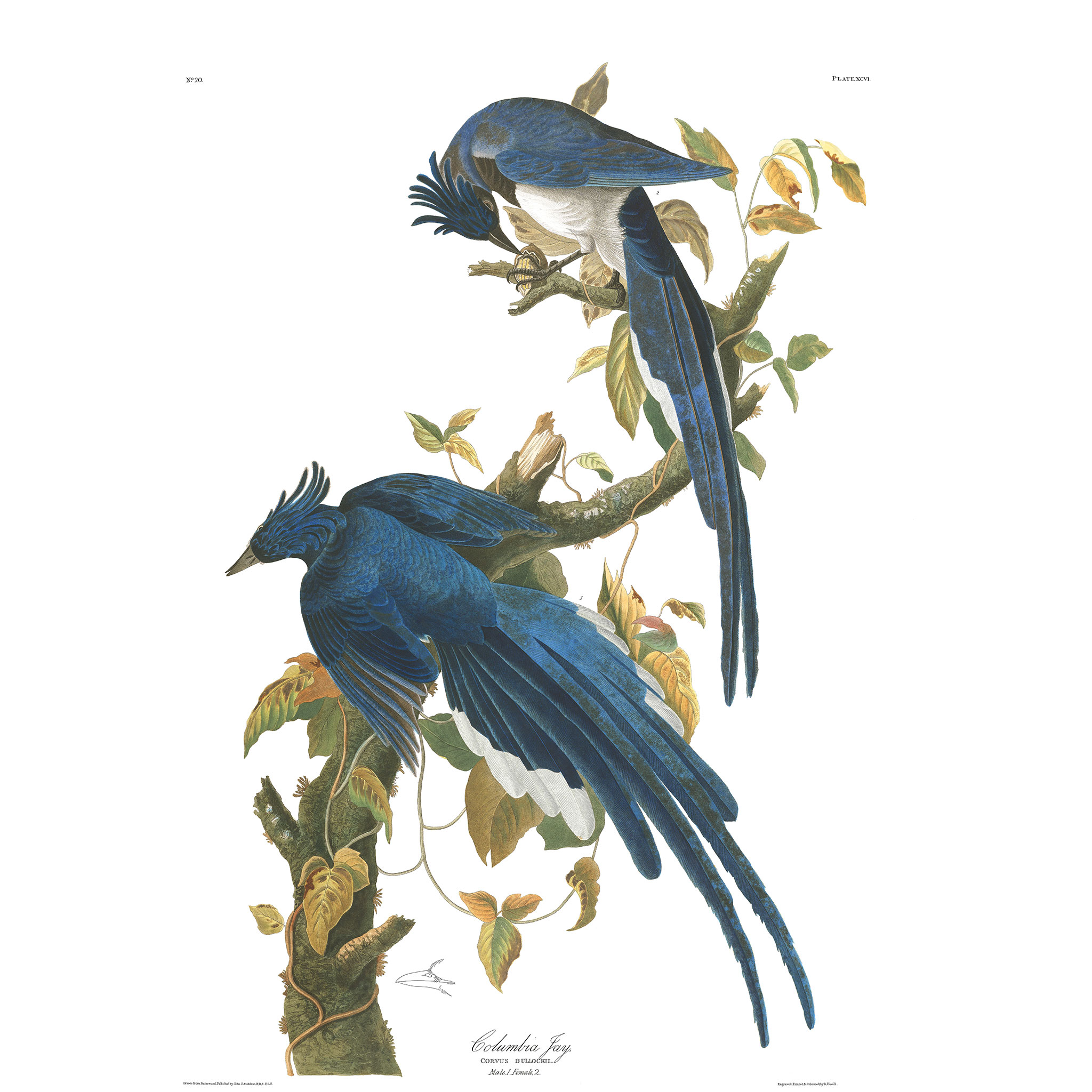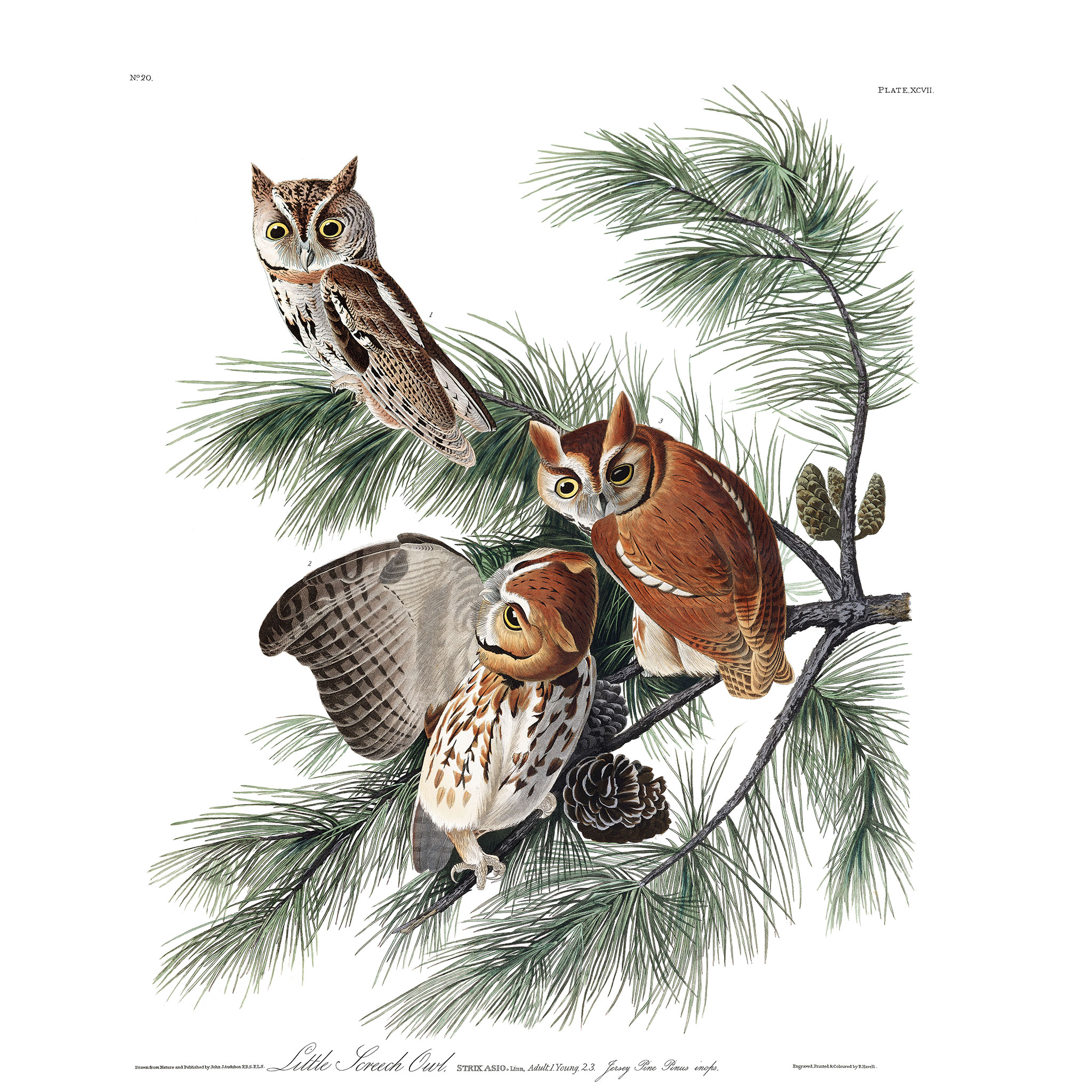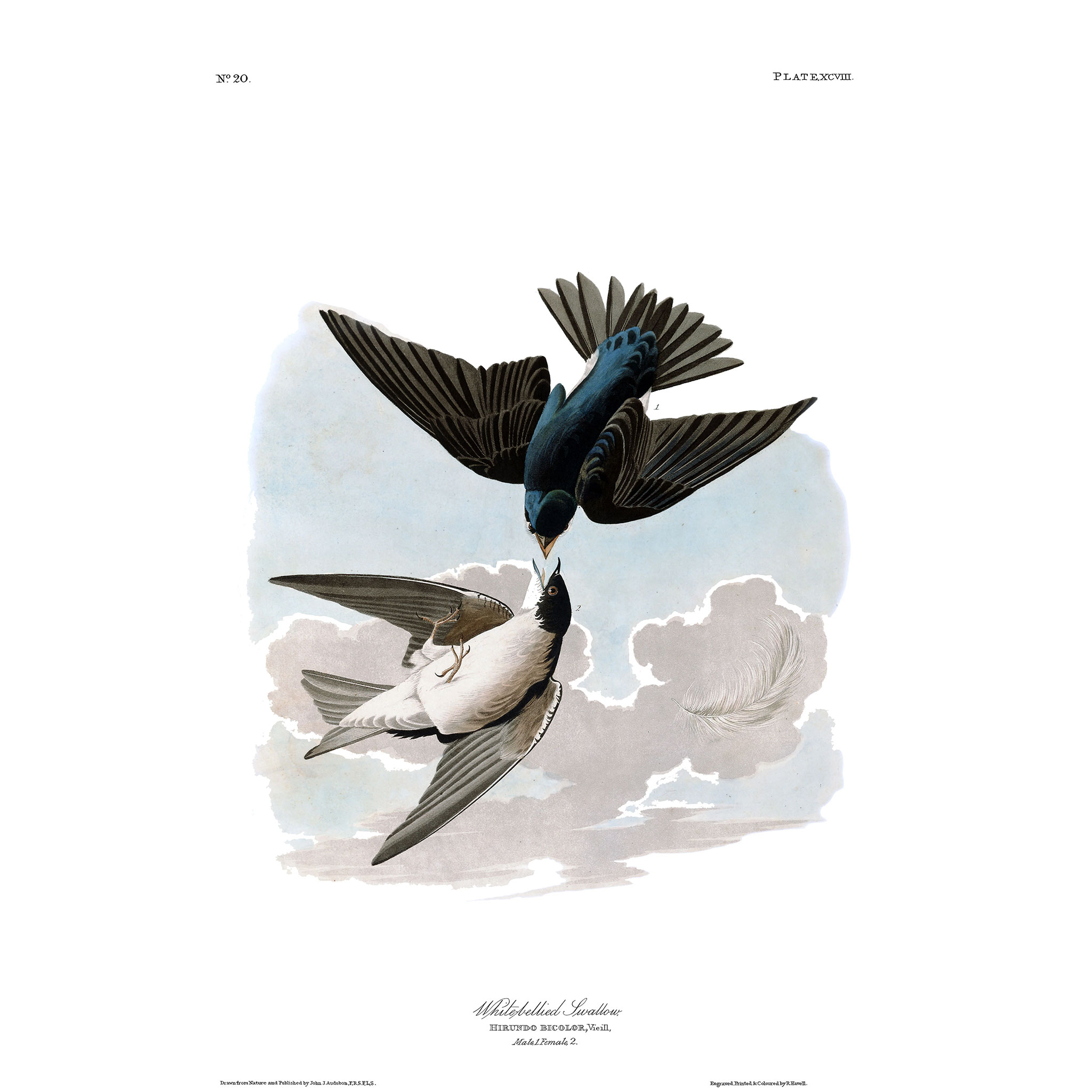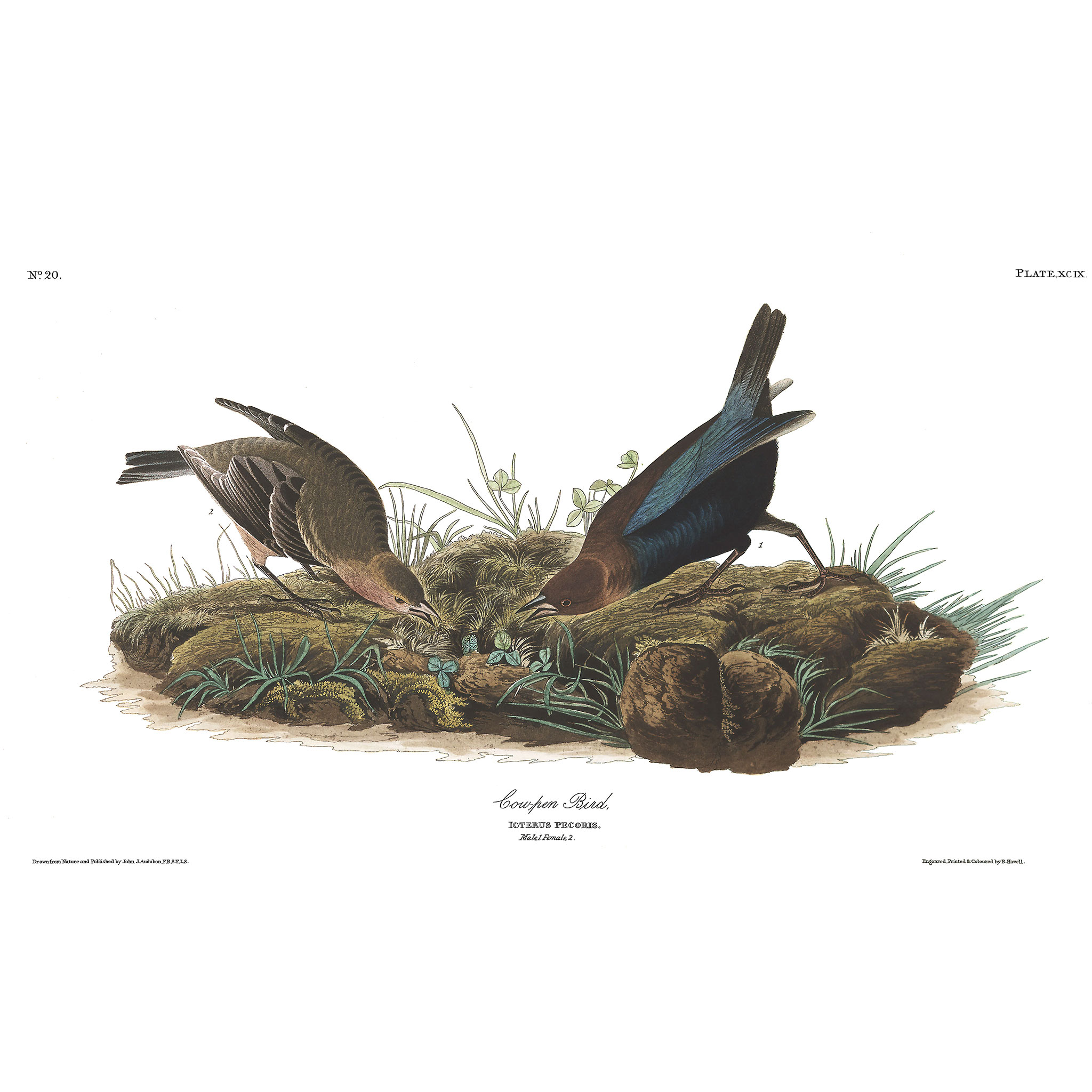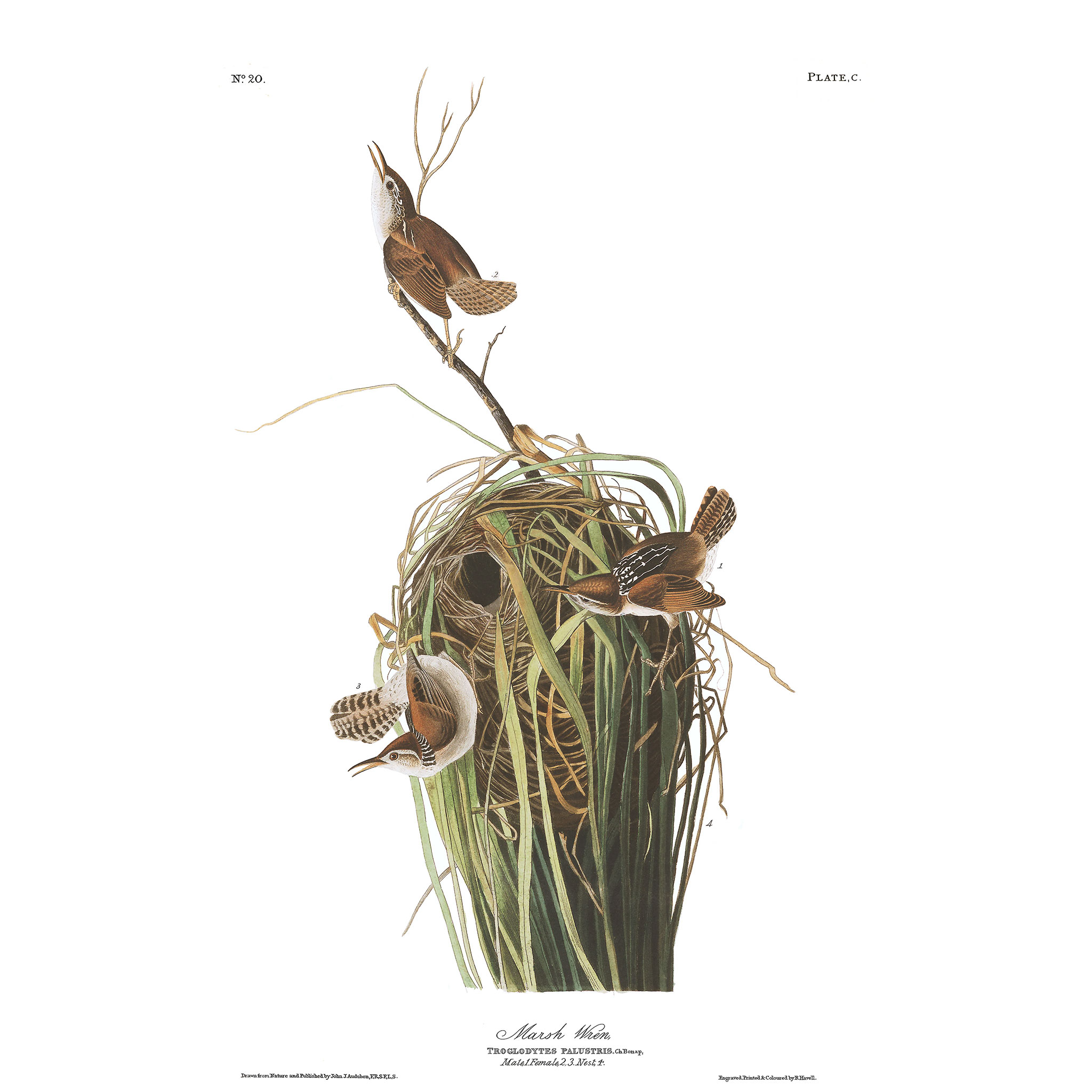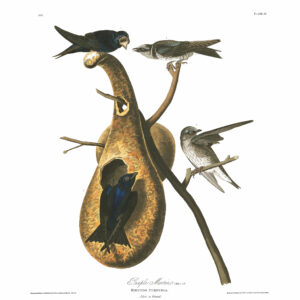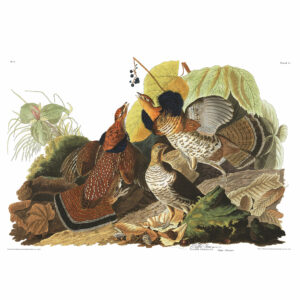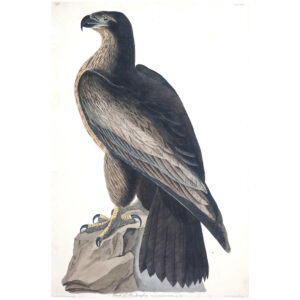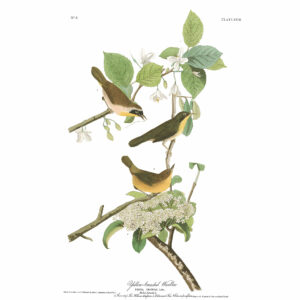Birds of America Volume 1 (Plates 96-100)
Adopt-an-Audubon Plate sponsor benefits:
- Credit on the bird label whenever it is exhibited
- Recognition on the Museum’s digital donor board in the main lobby
- Museum individual plus membership for 2 years (maximum of 2 years)
- For adoptions of $6,000 or more, a copy of our 250th anniversary book, The Charleston Museum: America’s First Museum
- For adoptions of $9,000 or more, an invitation to a private “behind the scenes” tour, for up to 4 people, of the Museum Archives and Collections Storeroom
For tax purposes, The Charleston Museum is recognized as a 501(c)(3) nonprofit organization by the Internal revenue Service, and your gift may be tax deductible. Please consult your tax advisor for further information.
Our Adopt-an-Audubon Plate Program is a means to support the Museum’s Archives collections and should in no way be construed as obtaining an ownership interest in these collections.
Plate XCVI
Columbia Jay
Drawn from Nature & Published by John J. Audubon
Engraved, Printed & Coloured by R. Havell
Were I to relate to you, good reader, the various accounts which I have heard respecting this splendid bird, I should have enough to say; but as I have resolved to confine myself entirely to the results of my own observation, I must for the present remain silent on the subject.
– John James Audubon
Plate XCVII
Little Screech Owl
Drawn from Nature & Published by John J. Audubon
Engraved, Printed & Coloured by R. Havell
You are presented, kind reader, with three figures of this species, the better to shew you the differences which exist between the young and the full-grown bird. The contrast of colouring in these different stages I have thought it necessary to exhibit, as the Red Owl of WILSON and other naturalists is merely the young of the bird called by the same authors the Mottled Owl, and which, in fact, is the adult of the species under consideration.
– John James Audubon
Plate XCVIII
White-bellied Swallow
Drawn from Nature & Published by John J. Audubon
Engraved, Printed & Coloured by R. Havell
Its flight is easy, continued, and capable of being greatly protracted. It is seen sailing, circling, turning, and winding in all directions, during the greater part of the day.
My friend Dr. BACHMAN says, “On the afternoon of the 16th of October, 1833, in company with Dr. WILSON and Mr. JOHN WOODHOUSE AUDUBON, I saw such an immense quantity of this species of birds that the air was positively darkened. As far as the eye could reach, there were Swallows crowded thickly together, and winging their way southward; there must have been many millions!”
– John James Audubon
Plate XCIX
Cow-pen Bird
Drawn from Nature & Published by John J. Audubon
Engraved, Printed & Coloured by R. Havell
The Cow-pen-bird, after passing the winter in the Southern States, or in regions nearer the equator, makes its appearance in the Middle States about the end of March or beginning of April, arriving in small parties. Their flight is performed chiefly under night; and during the day they are seen resting on the trees, or frequenting the banks of streams in quest of food. They continue to be seen in small flocks until the beginning of June, when they disappear, the various flocks having successively passed northward.
– John James Audubon
Plate C
Marsh Wren
Drawn from Nature & Published by John J. Audubon
Engraved, Printed & Coloured by R. Havell
It lives entirely amongst the sedges, flags, and other rank plants that cover the margins of the rivers, and the inlets of the sea. Its flight is very low and short, and is performed by a continued flirting of the wings, but without the motions of the tail employed by the Great Carolina Wren. Its song, if song I can call it, is composed of several quickly repeated notes, resembling the grating of a rusty hinge, and is uttered almost continuously during the fore part of the day, the performer standing perched on the top of a tall weed, from which, on the appearance of an intruder, it instantly dives into the thickest part of the herbage, but to which it returns the moment it thinks the danger over, and renews its merry little song.
– John James Audubon
$3,000.00
1 in stock


